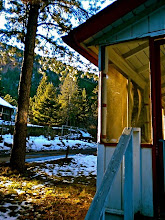Ages 16-Adult
The year is 1878, and the place is just on the outskirts of Seattle, Washington, but it’s a Seattle like you’ve never seen before.
In 1850, rumors of plentiful gold in the Klondike brought determined men and women to the frozen land, determined to cut through the treacherous ice and make their fortunes. In 1860, Russia announced a contest: The inventor who could produce or propose the mining machine that would get to the gold the fastest would win 100,000 rubles. Many came with their machines, but none were hardy enough to break through the ice, and Russia was on the verge of handing Alaska to America for a measly sum. Then, Seattle inventor Leviticus Blue came to them with a proposal for the most amazing mining machine ever created: It had precision and strength that would ensure an easy path straight to the gold. After receiving funding for his project, Blue returned home to begin construction. On January 2, 1863, Dr. Blue took the Boneshaker for a test drive, and Seattle would never be the same. The path of the drill took it under the streets of Seattle, tearing up the city and wreaking havoc on the world above. But it was after the dust had settled and the injured were tended that the most catastrophic affect of the drill became known: It released a poisonous gas called the Blight, which turned anyone who breathed it into walking dead. The city was evacuated and an enormous wall was erected around it, walling in the dead and the poisonous gas that still seeped from the ground.
15 years later, the remnants of those forced to evacuate live on the outskirts of the city where thy try to eke out a living in the poisonous climate. Dr. Blue’s widow and son are amongst those scraping by in the town, and it is not a peaceful or pleasant life for them. Everyone is still bitter about Dr. Blue’s destructive actions, and they take it out on Briar and Ezekiel Blue. Determined to prove that his father wasn’t the villain he’s been made out to be—that the destruction caused by the Boneshaker was accidental—15-year-old Ezekiel, or Zeke, decides to venture through a tunnel into the ruined city to find proof of his father’s innocence. When an earthquake collapses the tunnel, and seals off Zeke’s escape from the city, his mother, Briar must find a way to breach the walls to rescue her son.
Full of zombie mayhem and steampunk goodies such as airships, steam-powered inventions, and an alternate American history, this ghoulish adventure is a macabre pleasure from beginning to end.
Hot topics: Zombie violence, human violence, bad language, drug use mentioned.
Areas for discussion: American history, inventions, consequences of drug use.
Here are some discussion questions to get you started: (Warning: Some spoilers.)
- 1. We learn that there are people living within the walls of the ruined city. Once you see what the city is like, can you imagine them wanting to be there? They have options of escape: Tunnels, airships. Why do you think they chose to stay? What shared characteristics do you see amongst those who live within the walls of the city?
2. Despite the evil that lives within the city walls, and despite the unkindness of those who live in the Outskirts, Briar and Zeke encounter many who want to help them. Is this just because of Maynard’s legacy? Does this say something about the people who live within the walls of the city?
3. In the end of the book when we learn the truth about what happened to Leviticus Blue, what is your response? Do you feel differently about Briar?
4. At the end, Ezekiel and Briar are debating what they should do and where they should go. What do you think they chose? What would you have chosen?
If you liked this book you might like: Pride and Prejudice and Zombies by Jane Austen and Seth Grahame-Smith, Leviathan by Scott Westerfeld, The Book Thief by Marcus Zusak, Sabriel by Garth Nix.






